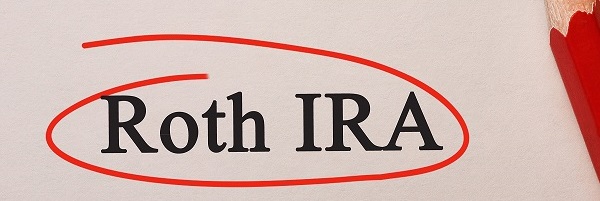Does a Roth IRA Conversion Make Sense for You?

With the introduction of the Roth IRA beginning in 1998, investors were given the ability to make contributions with after-tax dollars while foregoing any tax deductions from income on the front end. In exchange, they received tax-free growth on contributions and earnings with the ability to make tax-free withdrawals. Previously, investors only had the ability to contribute pre-tax dollars to employer retirement plans and traditional IRAs that would be included in taxable income upon distribution. Unfortunately, for the first decade or so, Roth IRAs excluded high-income earners because eligibility for direct contributions was phased out as Modified Adjusted Gross Income reached certain levels (i.e., 2009 MAGI limits: $105,000-$120,000 for a single filing taxpayer and $166,000-$176,000 for married taxpayers filing jointly). Likewise, eligibility for Roth IRA “conversions” was more restrictive and limited to only those with MAGI of less than $100,000.
Thankfully, beginning in 2010, the income limits to Roth IRA conversions were eliminated, allowing any taxpayer to convert pre-tax IRAs to Roth IRAs regardless of income. We will highlight a couple of scenarios where a Roth IRA conversion can make sense and also point out a few of the often overlooked benefits of this strategy.
The Retirement Income Gap
One strategy involves converting assets after one’s retirement date but before receiving retirement income from sources such as pensions, Social Security, and required minimum distributions from retirement accounts (RMDs). Social security benefits can be delayed with an 8% annual accrual increase in benefits up until the age of 70, and required minimum distributions from pre-tax retirement accounts are only mandated when one reaches 70.5 years of age.
The sweet spot for this strategy is a couple who retires in their early 60s before starting to take Social Security benefits, any pension income, and before having to take RMDs. Essentially when they retire, their only income may be interest/dividends and income associated with selling some of their taxable assets to subsidize their retirement expenses. This couple might be a great profile to do Roth IRA conversions during this “Retirement Income Gap” over the next 5 or so years before they begin taking Social Security benefits and being mandated to take RMDs, both of which will add to their taxable income. The Retirement Income Gap prior to age 70 may allow you to convert IRA assets at more favorable Federal tax rates (i.e., 15%, 25%, 28%) while your taxable income is lower than when all these other sources of income hit your tax return.
Tax Flexibility and Future Tax Rate Uncertainty
Tax rate uncertainty is one of the biggest threats to retirees who are in the distribution phase and drawing on their assets to maintain their retirement lifestyle. The highest marginal United States federal income tax rates have varied drastically over the years.
The current highest marginal tax rates are much lower than certain points throughout the last century. Although the surprising results of this year’s elections have put Donald Trump and his proposal for income tax cuts in the White House, the fact that individual income tax rates will certainly be cut is merely speculation at this point. We plan for long retirements for our clients, and because of our uncertainty regarding future tax rates, we advise clients that it is beneficial to have both pre-tax retirement account assets and after-tax Roth IRA assets to allow greater tax flexibility with regard to distributions in retirement.
Roth IRAs allow you to make tax-free withdrawals of both contributions and earnings growth after the age of 59 ½. If tax rates were to decline during retirement, it would likely be advisable to take distributions out of pre-tax IRAs and save the Roth funds for years where either income or the tax rate environment is much higher (keeping in mind that there are no required minimum distributions on Roth IRAs).
Nondeductible IRA Contributions and Subsequent Roth Conversions – “Backdoor Roth IRA”
High-income earners whose AGI exceeds this year’s threshold ($184,000-$194,000 if married and filing jointly) are not allowed to contribute to a Roth IRA; however, all earners can contribute to a traditional IRA, it just may not be deductible on your taxes. The tax code permits you to make these nondeductible IRA contributions and provided you have no other pre-tax IRAs outstanding, you then have the ability to convert those contributions to a Roth IRA, potentially free of income taxes.
For example, Sam and Sally Smith each make $5,500 in nondeductible IRA contributions in 2016, and neither of them has any pre-tax IRAs outside of their respective 401(k)s. They would then want to convert these contributions after a short amount of time to allow for future growth to occur in the Roth IRA and not the traditional IRA. If they don’t convert, and their $5,500 contributions turn into $11,000 in 10 years, they would owe taxes on the $5,500 of growth. If they had instead converted those contributions, the entire $11,000 could be withdrawn tax-free.
Please note, if you have existing pre-tax IRAs, the IRS mandates that you must aggregate these balances when doing a conversion. Conversely, if Sam had another traditional IRA worth $5,500 that was a rollover from an old 401(k) and he made the $5,500 nondeductible IRA contribution, he would need to aggregate both accounts. If he just converted the $5,500, his taxable income would be $2,750 ($5,500 x (1-$5,500/$11,000)) on the $5,500 conversion.
Spousal or Beneficiary Protection and RMD Planning
One benefit of Roth conversions that often gets overlooked is the effect it will have on future RMDs from pre-tax retirement accounts. By converting pre-tax IRA funds to Roth IRAs, you are reducing the balance in those IRAs and, thus, the RMDs associated with those accounts. If you have a $1,000,000 IRA, the amount of the first year RMD would be equal to $36,496.
If you have income from other sources, this may only increase your taxes unnecessarily. The percentage you are required to withdraw each year increases as a percentage of your IRA because life expectancy decreases. This is even more prevalent if you are single or have inherited your former spouse’s IRA and are taking RMDs on both accounts.
With a Roth IRA, there are no mandated RMDs for either the account owner or his/her spouse. As an added benefit, any other beneficiaries (children, grandchildren, or other non-spouse) would also inherit these assets tax-free, although they would be required to take minimum distributions from the Roth IRAs over their life expectancies (if specifically named as beneficiaries).
Estate Planning Using Roth IRAs
An additional benefit for those with taxable estates is the ability to use Roth IRA conversions in estate planning. One can convert IRAs and pay the income tax with other funds to effectively reduce the overall estate size.
Worthy of Consideration
Roth IRAs are much more prevalent now than upon their immediate introduction because of the recent ability for anyone to convert and the ability for Roth 401k contributions. Roth IRA conversions can be a very useful tax planning tool to offer tax flexibility in retirement, to protect against increased income or uncertain future tax rates, for nondeductible IRA conversions, to avoid RMDs when unnecessary, and for estate tax avoidance. As with any tax recommendation, we encourage you to consult your CPA and advisor to see if and when a Roth IRA conversion may make sense for your individual situation. If you have any questions, please contact us.

- Achiever, Competition, Learner, Significance, Self-Assurance
Nick Hall, CFP®, CAP®
Nick Hall, Investment Advisor and Principal, began his career in 2010. Since joining Lutz in 2014, he has established himself as a key leader in the firm's wealth management and financial planning practice.
Focusing on business owners, professionals, and families with complex financial needs, Nick creates strategies tailored to each client's unique situation. He guides clients through investment decisions, retirement planning, and wealth transfer strategies, while helping them navigate tax considerations and charitable giving. What Nick values most is helping clients feel confident about their financial future and seeing them achieve their personal goals.
At Lutz, Nick serves beyond expectations for his clients, often thinking several steps ahead to address needs they haven't yet considered. His practical approach to complex financial challenges helps clients see a clear path forward, whether they're planning for business succession or managing family wealth across generations. By breaking down complicated concepts into actionable steps, he helps clients make confident decisions about their financial future.
Nick lives in Omaha, NE, with his wife Kiley and their three children, Amelia, Harrison, and Samuel. Outside the office, he enjoys spending time with family, watching sports, playing golf and softball, traveling, and exploring local restaurants.
Recent News & Insights
Tired of Complex Books? 8 Ways to Simplify Your Accounting
HR Solutions That Elevate the Employee Experience
Cost Report Update
Multistate Tax Trends to Watch in the Midwest



.jpg?width=300&height=175&name=Mega%20Menu%20Image%20(1).jpg)
%20(1).jpg?width=300&height=175&name=Mega%20Menu%20Image%20(2)%20(1).jpg)
%20(1)-Mar-08-2024-09-27-14-7268-PM.jpg?width=300&height=175&name=Untitled%20design%20(6)%20(1)-Mar-08-2024-09-27-14-7268-PM.jpg)

%20(1)-Mar-08-2024-09-11-30-0067-PM.jpg?width=300&height=175&name=Untitled%20design%20(3)%20(1)-Mar-08-2024-09-11-30-0067-PM.jpg)
%20(1).jpg?width=300&height=175&name=Mega%20Menu%20Image%20(3)%20(1).jpg)
%20(1).jpg?width=300&height=175&name=Mega%20Menu%20Image%20(4)%20(1).jpg)
%20(1).jpg?width=300&height=175&name=Mega%20Menu%20Image%20(5)%20(1).jpg)
-Mar-08-2024-08-50-35-9527-PM.png?width=300&height=175&name=Untitled%20design%20(1)-Mar-08-2024-08-50-35-9527-PM.png)


.jpg)




